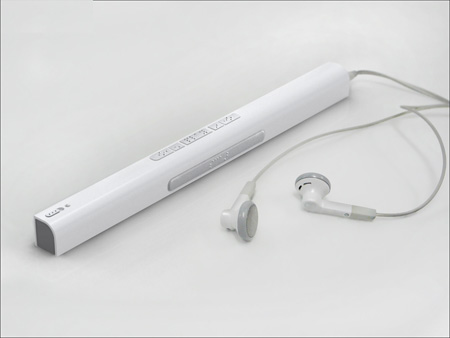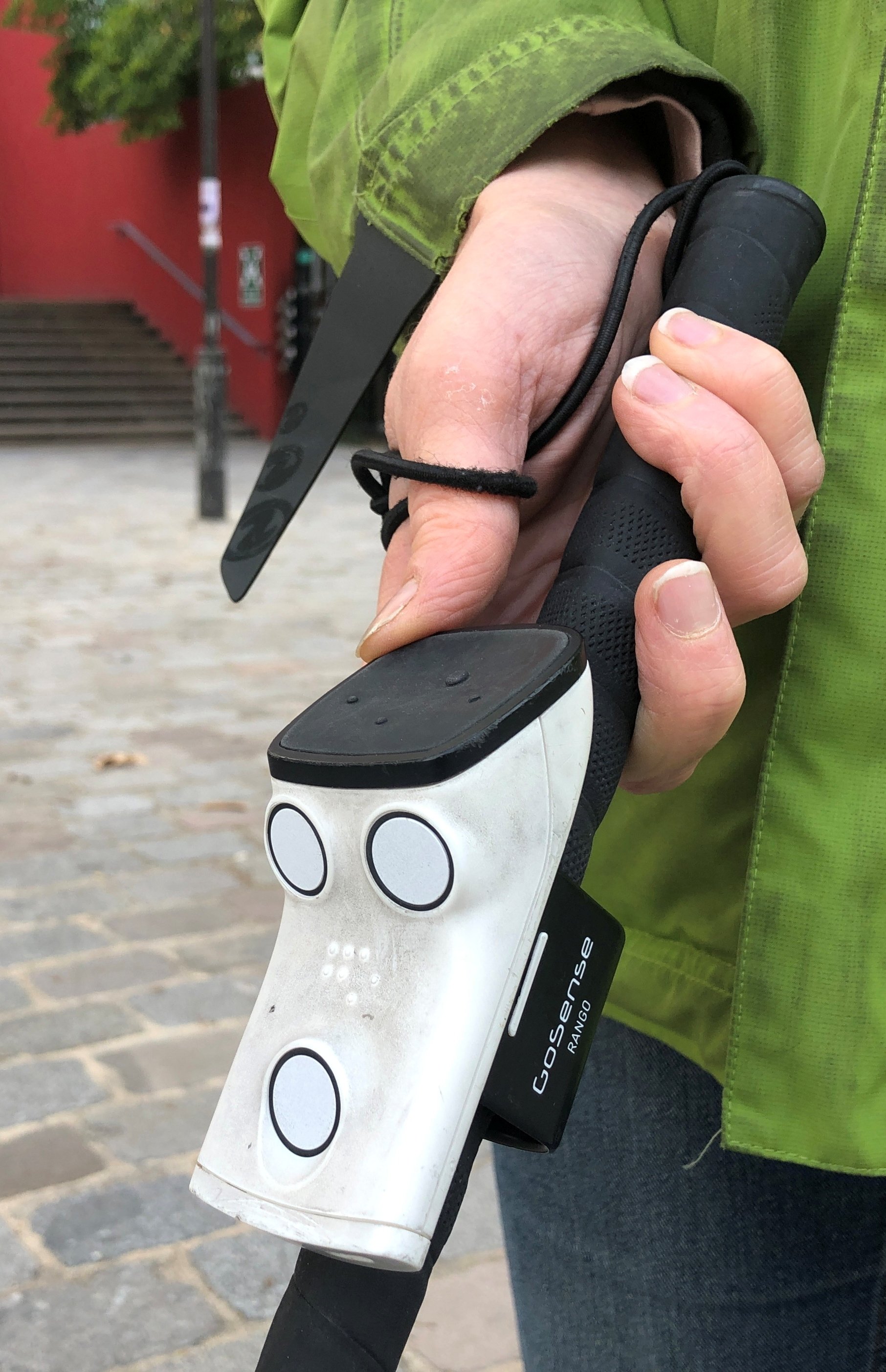Voice-Activated Assistive Devices: Supporting the Visually Impaired
Voice-Activated Assistive Devices: Supporting the Visually Impaired
Blog Article
Discover Innovative Tools Created for the Visually Impaired
The growth of innovative tools for the aesthetically impaired stands for a substantial improvement in access and independence. Technologies such as smart glasses with AI abilities and mobile applications developed to provide acoustic summaries are improving everyday experiences for customers. Additionally, wearable devices that use haptic comments improve environmental understanding, while modern-day Braille developments offer brand-new ways to engage with text. As these tools continue to advance, their effect on the lives of those with visual disabilities elevates vital inquiries about the future of inclusivity and freedom in various aspects of life. What exists in advance in this technical landscape?
Smart Glasses for Navigation

Smart glasses designed for navigation are changing the method visually impaired individuals connect with their environment. These innovative gadgets use a combination of video camera innovation, artificial knowledge, and acoustic feedback to supply real-time details about surroundings. By using barrier discovery systems, smart glasses can alert users to prospective dangers, allowing much safer movement in both strange and acquainted settings.
The integration of GPS innovation additionally boosts navigating capabilities, allowing customers to receive auditory instructions as they move. This hands-free method not only promotes freedom but likewise equips aesthetically impaired people to browse urban landscapes with raised self-confidence. Additionally, many clever glasses are geared up with functions that determine spots and road indicators, offering contextual information that enhances the customer experience.
Additionally, the development of these tools is continuously progressing, with firms functioning to enhance the accuracy of object acknowledgment and increase the range of navigational features. As clever glasses come to be a lot more inexpensive and available, they hold the prospective to substantially change day-to-day live for aesthetically impaired individuals. Ultimately, these innovative devices stand for an important action towards inclusivity, offering improved movement and a greater feeling of freedom for people navigating the globe around them.

Mobile Apps for Daily Living
How can mobile applications improve the day-to-days live of visually impaired people? Mobile apps are transforming the method visually impaired users browse their atmospheres, manage daily jobs, and access details. These applications give crucial assistance through different capabilities, cultivating self-reliance and improving lifestyle.
Numerous ingenious mobile apps are developed specifically for everyday living. As an example, applications like Be My Eyes connect aesthetically damaged customers with sighted volunteers by means of video phone calls, allowing them to receive real-time aid with jobs such as reading labels or navigating unknown rooms. In A Similar Way, Seeing AI, developed by Microsoft, uses expert system to explain environments, checked out message, and determine items, efficiently transforming a smart device right into an effective tool for everyday help.
Additionally, navigating applications tailored for the visually impaired, such as Aira and BlindSquare, provide audio-based instructions and ecological details, allowing users to traverse their surroundings safely and with confidence. Beyond navigation and instant support, mobile apps also support organization and task administration, with features that assist individuals set suggestions, create to-do checklists, and track visits. In recap, mobile applications function as crucial resources, equipping aesthetically damaged individuals to lead even more independent and meeting lives.
Wearable Technologies for Assistance
Empowerment through modern technology is progressively noticeable in the world of wearable gadgets developed to aid aesthetically impaired individuals. These innovative tools incorporate seamlessly right into day-to-day live, improving navigation and giving important comments to individuals. Smart glasses outfitted with video cameras can acknowledge faces and read message aloud, allowing individuals to engage more with confidence in social and specialist setups.
One more noteworthy advancement is using haptic responses systems in wearable gadgets. These systems use resonances or various other tactile signals to share information regarding the customer's atmosphere, such as obstacles or changes in terrain, boosting movement and safety. Wearable technologies also consist of wristbands that connect to smart devices, signaling individuals to notices through subtle resonances, thus improving connection without reliance click to investigate on aesthetic hints.
As these modern technologies proceed to advance, they are not only boosting independence for visually damaged individuals yet likewise cultivating a better feeling of inclusion in society. By linking the space between challenges dealt with in daily living and the capacity for freedom, wearable modern technologies act as crucial tools in the mission for equality and empowerment for those with visual impairments.
Sound Description Devices
Sound description tools play a vital role in boosting availability for aesthetically damaged individuals, supplying them with the capacity to engage with visual media. Speech-to-text devices for low vision. These tools offer narrated summaries of essential visual aspects in movies, tv programs, and live performances, ensuring that customers can completely understand the context and feelings shared with visuals
Audio summary can be incorporated into numerous platforms, consisting of streaming services, cinema testings, and live cinema. Numerous popular streaming services now include audio summary as an accessibility feature, enabling visitors to pick it conveniently. In enhancement to traditional media, specialized apps likewise exist, offering audio descriptions for art exhibits, museums, and various other social occasions.
The efficiency of audio summary depends upon the ability of the narrators, who need to convey visual information succinctly without interfering with the initial sound. Advancements in this area are additionally leading the way for even more individualized experiences, where customers can readjust the level of information and pacing according to their choices.
Braille Innovations and Tools
Braille devices and advancements have actually considerably transformed the means visually damaged individuals connect with text and info. Modern innovations have actually led to the advancement of functional tools that enhance proficiency and freedom among individuals.
Additionally, mobile Braille notetakers combine conventional Braille input with contemporary performances, facilitating note-taking, organizing, and file modifying on the move. Wearable technology for low vision. These portable devices commonly feature text-to-speech capacities, linking the void in between Braille and auditory info
On top of that, innovative Braille printers have actually arised, enabling individuals to create Braille labels, records, and educational materials efficiently. This access cultivates greater participation in professional and academic atmospheres, inevitably promoting inclusivity.
Additionally, research into wise Braille modern technologies continues to expand. Gadgets that integrate expert system are being discovered to provide real-time navigating assistance and contextual information, boosting the customer experience in varied settings. In general, these developments reflect a commitment to encouraging visually impaired people article with innovation, ensuring they can easily accessibility and involve with the globe around them.

Conclusion
The improvement of cutting-edge tools for the aesthetically damaged considerably enhances self-reliance and lifestyle. Smart glasses, mobile applications, wearable technologies, audio summary tools, and Braille technologies collectively equip individuals by giving essential navigation aid, ecological awareness, and boosted websites analysis experiences. These innovations not only foster higher addition but additionally promote autonomy in day-to-day activities, ultimately adding to a much more equitable and obtainable culture for visually impaired individuals. Continued advancement in this field holds promise for more enhancements.
As wise glasses come to be a lot more obtainable and inexpensive, they hold the potential to significantly transform day-to-day life for aesthetically impaired individuals. Mobile applications are revolutionizing the way aesthetically damaged users navigate their atmospheres, take care of day-to-day tasks, and accessibility information. Applications like Be My Eyes connect aesthetically damaged individuals with sighted volunteers via video clip calls, permitting them to get real-time help with tasks such as reviewing tags or navigating unfamiliar rooms.Additionally, navigating apps tailored for the aesthetically impaired, such as Aira and BlindSquare, use audio-based instructions and ecological info, enabling customers to traverse their surroundings securely and with confidence.The improvement of cutting-edge devices for the aesthetically damaged substantially boosts freedom and top quality of life.
Report this page